Oh, Italy, you unfair beauty, you. It’s hard to know where to start but here we will introduce you to the best Italian landmarks. The places you simply have to see.
The Best Italian Landmarks
Let’s face it, Italy is on most of our bucket lists for many, many reasons. From world-famous museums, historical monuments, cathedrals, and Michelin star restaurants to mountains and rugged coastlines, Italy has something for each one of us. You will be spoilt for choice when you visit this southern European country that dips its toes into the Mediterranean Sea. Known as the boot by some, it also goes by the nickname “the Bel Paese.” That means “beautiful country” and you don’t need to tell us twice., which means beautiful country on the other.
One visit to this gorgeous country is simply not enough. Our list of the ten most important landmarks in Italy will take you on an unforgettable journey and leave you wanting more.
And when you’re ready to start planning further, check out this article on how to plan your Italian itinerary, and don’t miss these hidden gems in Italy.
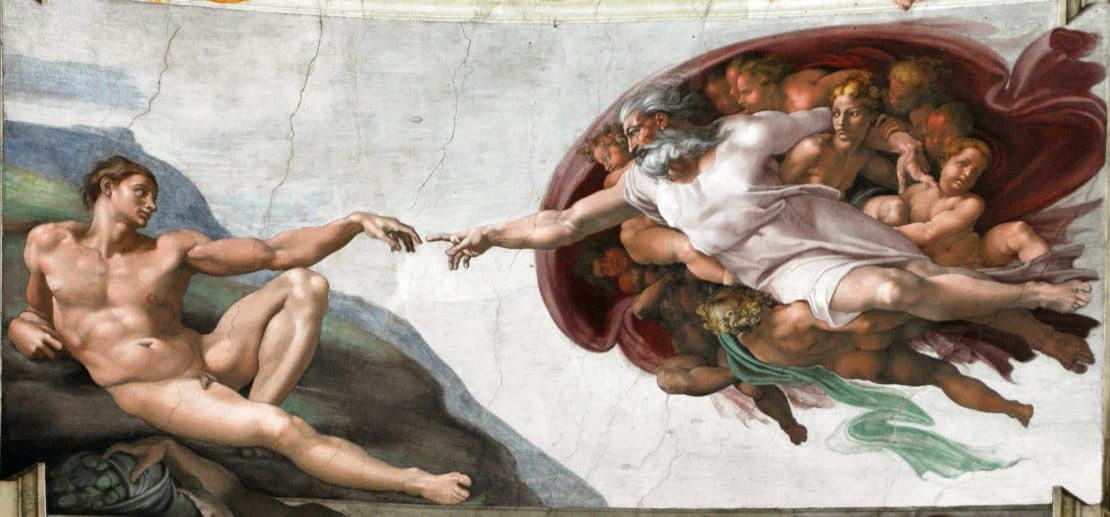
The Sistine Chapel, Vatican City
Without a doubt, the Sistine Chapel in the Vatican is one of the world’s most well-known Italian landmarks. Originally named the Cappella Magna, it was later named the Sistine Chapel after Pope Sixtus IV. The first paintings of this 15th century monument were completed by various renaissance artists like Sandro Botticelli, Cosimo Roselli, Domenico Ghirlandaio, Pietro Perugino, and Pinturicchio.
Then a new artist had a go.
In 1508, Pope Julius II appointed Michelangelo to embellish the ceiling that was initially a simple blue sky dotted with stars. Over the following four years, Michelangelo created one of the most spectacular art pieces in the world. The nine central panels on the ceiling show the Stories of Genesis from the Creation to the Fall of Man, the Flood, and the subsequent rebirth of mankind with Noah’s family.
The whole of Vatican City is definitely worth visiting, and as an aside, don’t miss some of Rome’s most exciting concept stores that offer jewelry, high fashion brands, custom tailoring, and leather goods. While it’s a great idea to see some of Italy’s most famous landmarks, make time to explore Rome away from the tourist crowds.
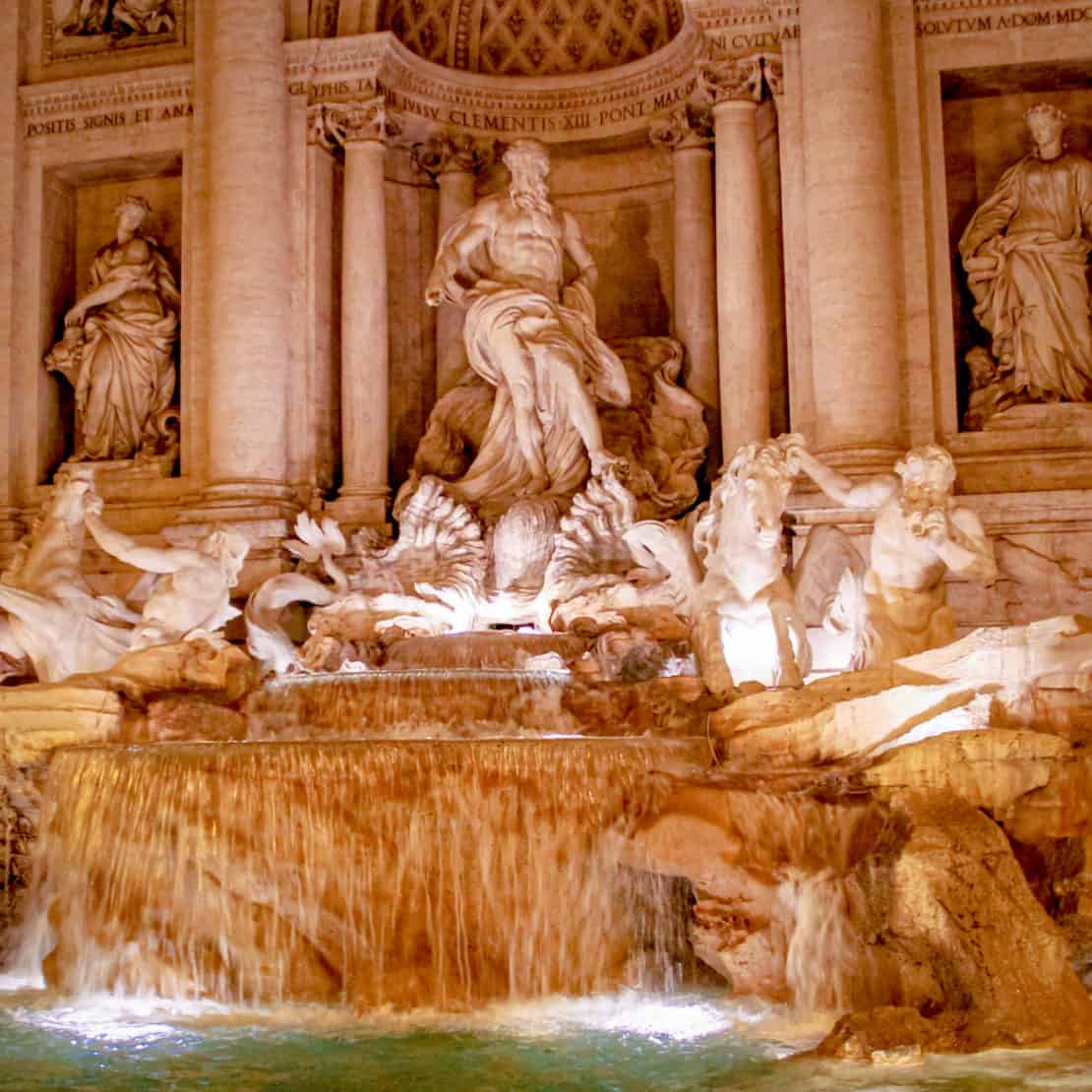
The Trevi Fountain
The Trevi Fountain is a scenic wonder located in Rome’s Trevi district, right in the centre of De’ Crocicchi Street, Poli Street, and Delle Muratte Street. These three streets (tre vie) give the fountain its name – the Three Street Fountain. It has its origins in ancient Roman times, when the construction of the Aqua Virgo aqueduct in 19 B.C. was the main source of water for the popular Roman baths.
The existing version of the fountain was designed by the architect Nicola Salvi and finished by Giuseppe Pannini in 1762. This baroque-style masterpiece stands 26 meters high and 49 meters wide, making it the biggest baroque fountain in the city. At the centre, we can see Neptune accompanied by two tritons and sea horses on either side. Coins thrown into this fountain with the right hand and over the left shoulder are said to ensure a return to Rome. These coins total roughly 3000 Euros daily, and they are collected and given to an Italian charity.
See also this article on the best neighbourhoods to stay in Rome.
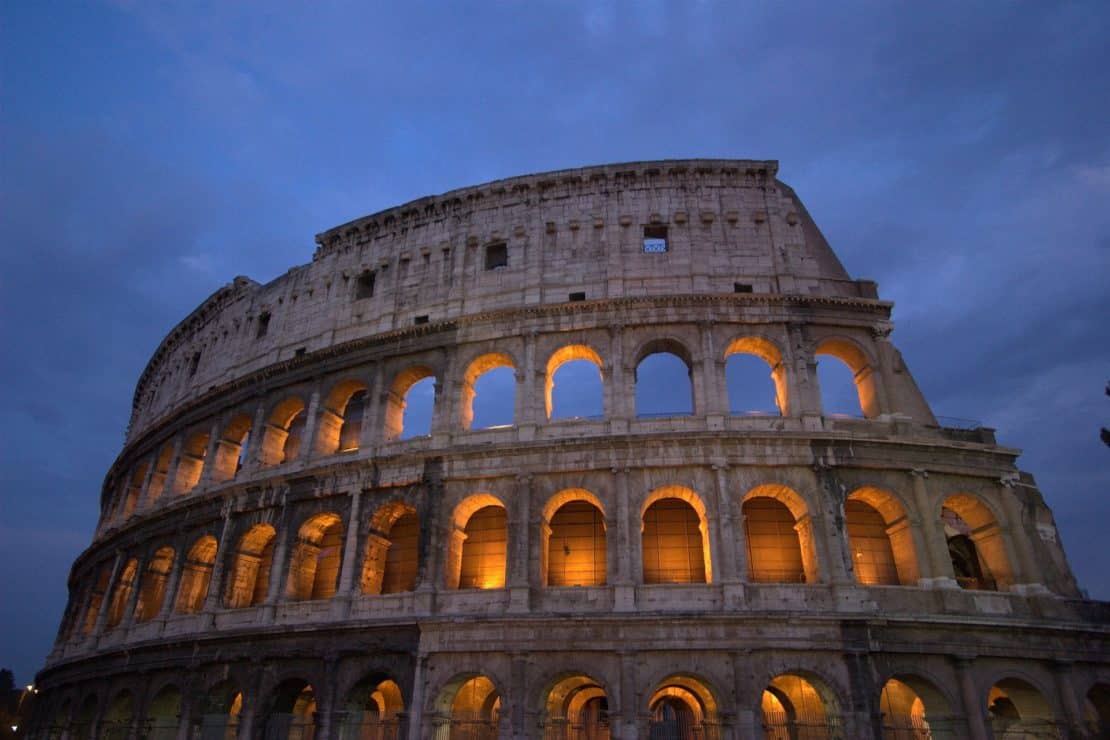
The Colosseum
Just east of Palatine Hill, you’ll find another of the most famous Italian landmarks: The Colosseum. Building work on this giant arena began sometime between 70 and 72 A.D. and was completed in 80 A.D. The Colosseum could seat over 70,000 people, making it the world’s largest amphitheatre during its time. It has been witness to a vast number of animal hunts, gladiator games, and battles.
The animals and gladiators were kept in the Hypogeum, worth a visit, along with the Arch of Constantine and Bronze Cross. The structure has an impressive arrangement of columns that became the basis of the Renaissance codification known as the assemblage of orders. After visiting the Colosseum, walk across to the Roman Forum next door, and around the Palatine Hill.
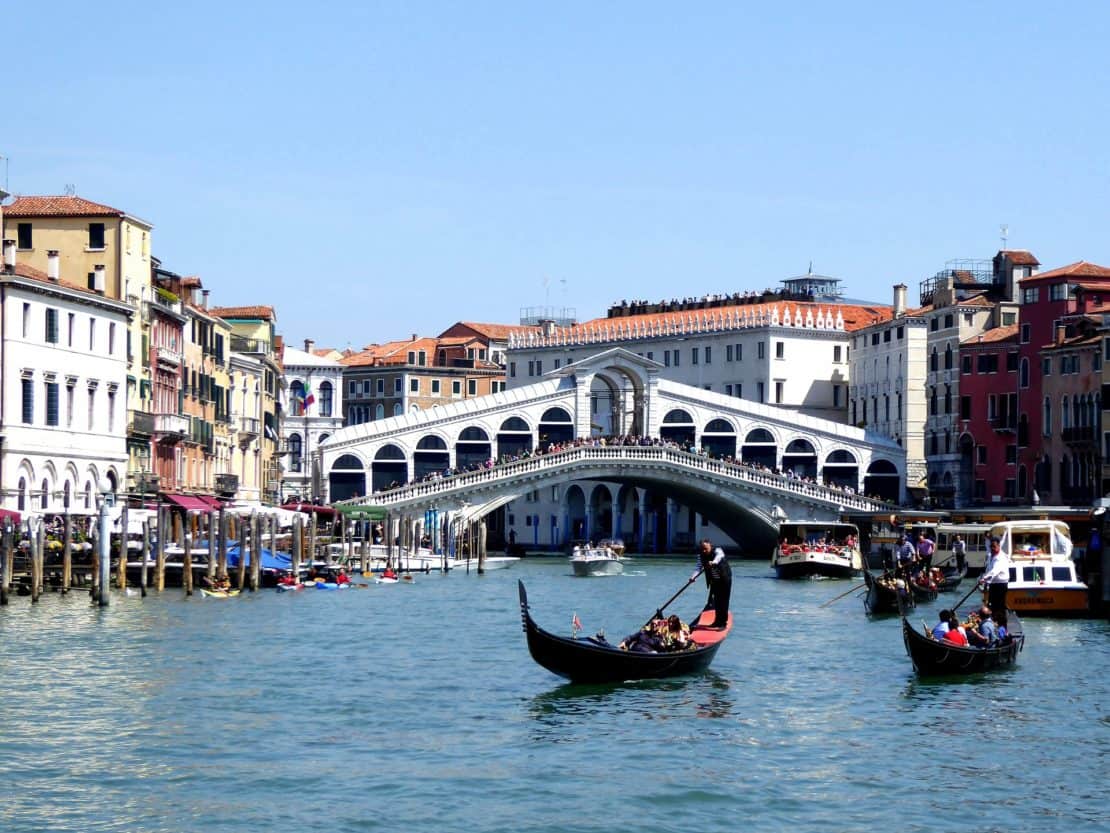
The Rialto Bridge, Venice
In the heart of Venice, the Rialto Bridge or Ponte di Rialto is a stone arch bridge constructed at the narrowest point of the Grand Canal. Built at the end of the 16th century, it is famous for the Renaissance period’s architectural achievement. Antonio da Ponte and his nephew Antonio Contin designed and built it. This Venetian bridge is 22 meters wide, 48 meters long, and 7.5 meters high.
Until the mid 19th century, it was the only way to cross the Grand Canal on foot since it was the only bridge over the Canal. It is lined with shops on either side, making it a place where people like to linger. But if you are looking to invest in some timeless luxury Italian designer brands like Prada, Gucci, Dolce & Gabbana, or Murano glass Italian souvenirs, then visit Le Mercerie, just a short walk away. It is one of Venice’s most prestigious shopping destinations and a local Italian landmark.
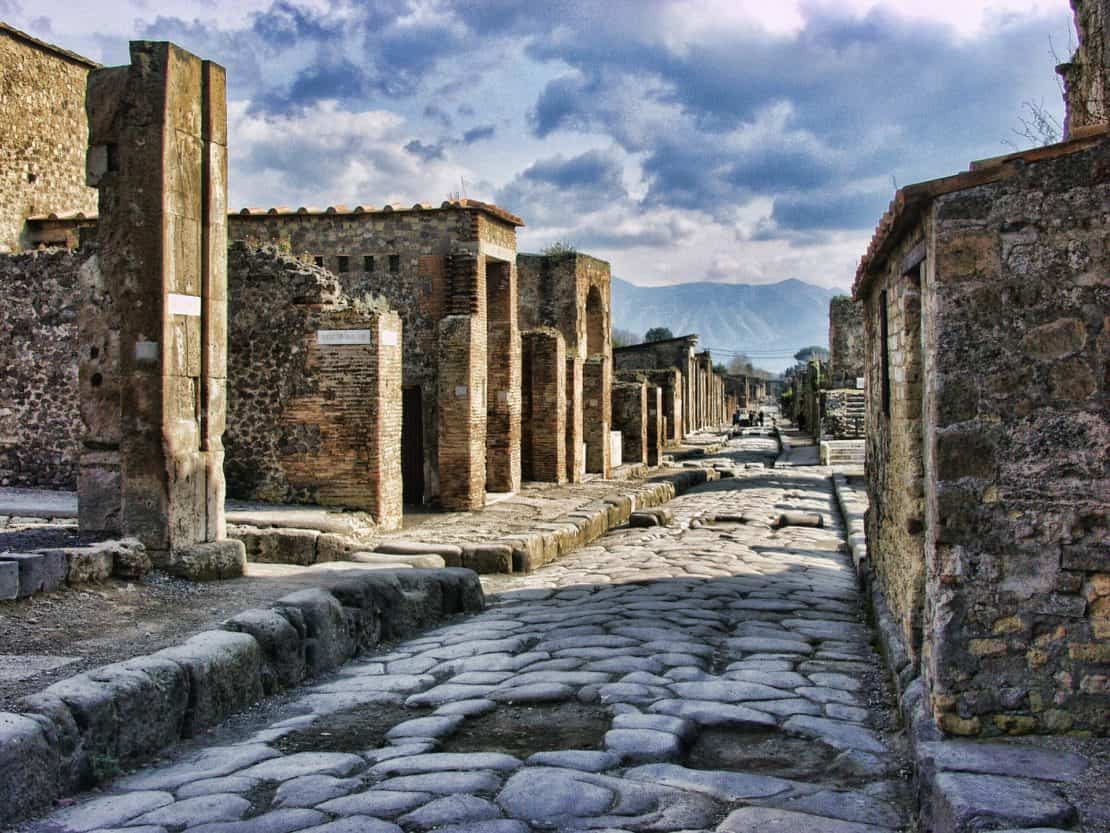
Pompeii
In the 1700s, the world was both amazed and astonished to discover the superbly preserved remains of Pompeii. Once a bustling and prosperous city situated 14 km east of Naples at the southeastern base of Mt. Vesuvius, Pompeii was destroyed by a huge eruption that covered the town with volcanic debris and ash.
For many centuries, Pompeii remained covered by this blanket of ash that helped to preserve the remains. This Greco-Roman city remained frozen in time and now offers an insightful window into ancient Roman life and buildings. The main attractions to visit in Pompeii are the Grand Theatre of Pompeii, Thermal Baths and Temples, and preserved mosaics and artworks.
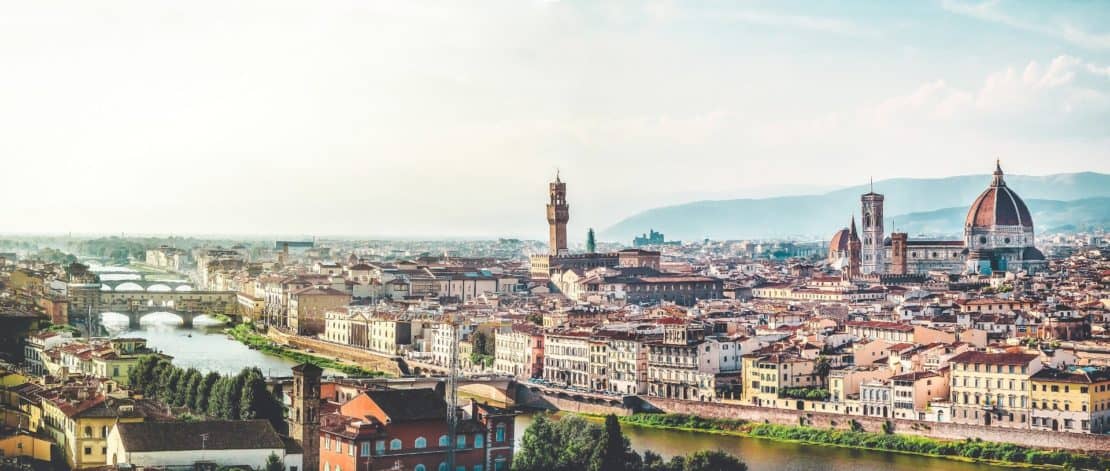
The Accademia Gallery, Florence
The magnificent colossal marble sculptures created by Michelangelo dominate the galleries of the Galleria dell’Accademia di Firenze. One of the most famous Italian landmarks, Michelangelo’s “David” lives within the Tribune, just beyond Michelangelo’s unfinished “Slaves” in the Hall of Prisoners.
The main halls of the gallery display works by other Renaissance greats like Sandro Botticelli, Pontormo, Domenico Ghirlandaio, Allessando Allori, Andrea del Sarto, and Orcagna. For opera, classical, and theatre music enthusiasts, the Academia hosts the grand ducal collection of forty instruments belonging to the Luigi Cherubini Conservatory.
Inside Tip: make time to visit Piazza della Signoria, the centre of political life during the Renaissance. The nearby Uffizi Gallery should also make it onto your Italy bucket list.
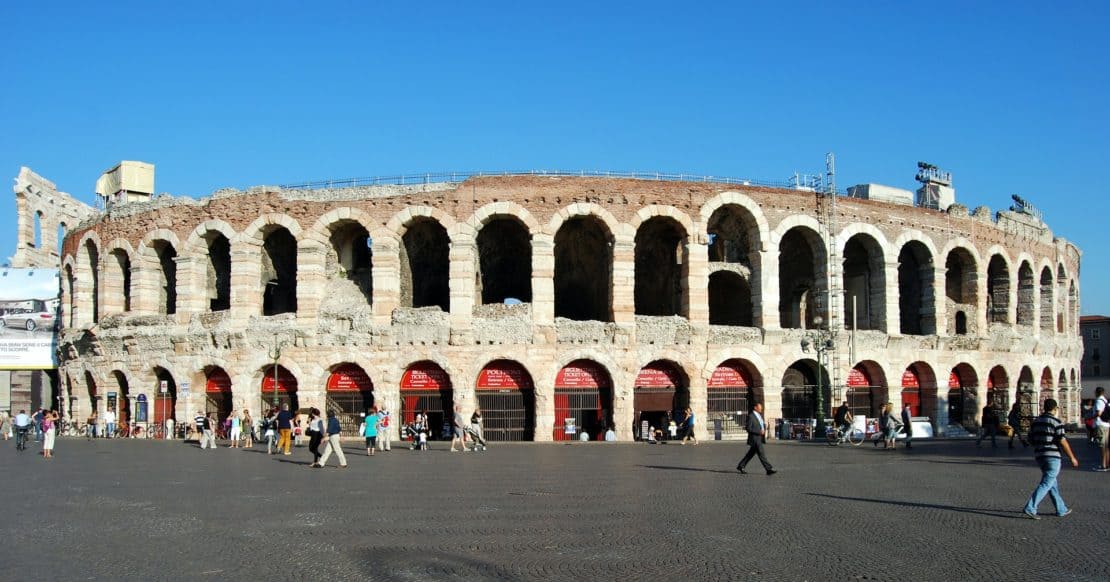
Arena di Verona
Attending the opera in the beautiful city of Verona at the Arena di Verona has to be the highlight of any trip to this city, the home of Romeo and Juliet. This 30,000 seat amphitheatre dates back to 30 A.D., which makes it older than the Colosseum. It is one of the best-preserved ancient structures not only in Italy but the world as well. In ancient times it was used for gladiator games and exotic animal fights. Today, since 1913, it is the venue for opera performances that feature world-famous opera artists.
It has recently hosted concerts by Pink Floyd, Rod Stewart, Elton John, One Direction, Mumford & Sons, and Adele. Additionally, on Via Mazzini, a lovely walk between the Arena and Piazza Erbe, many high street Italian fashion boutiques and jewellery stores are located.
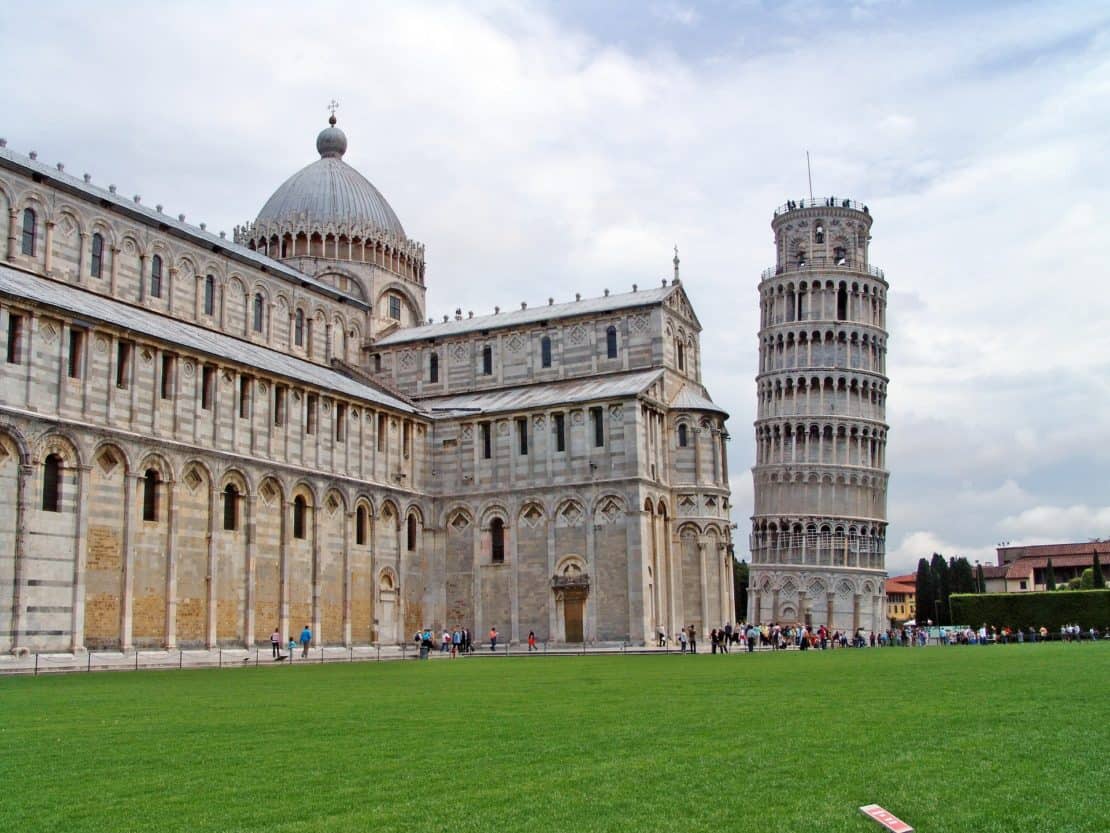
The Leaning Tower of Pisa
The breathtaking white marble leaning Tower of Pisa is something you need to see to believe. Located in the Piazza dei Miracoli of Pisa, it is a free-standing bell tower with 300 steps and dates back to the 12th century. It is just over 55 meters tall and has a lean of nearly four degrees. In a collection of Italian landmarks, it is perhaps the most recognisable.
The lean in the tower began during its construction and got steadily worse until its completion in the 14th century. By 1990, there was a lean of 5.5 degrees, and repair works were undertaken that rectified the lean by 1.5 degrees. The Piazza Dei Miracoli is a UNESCO World Heritage Site and home to the Pisa Cathedral, Pisa baptistery, and Pisa cemetery.
Once you’ve seen your fill of famous Italian landmarks, check out these hidden gems in Tuscany, close to the Leaning Tower of Pisa.
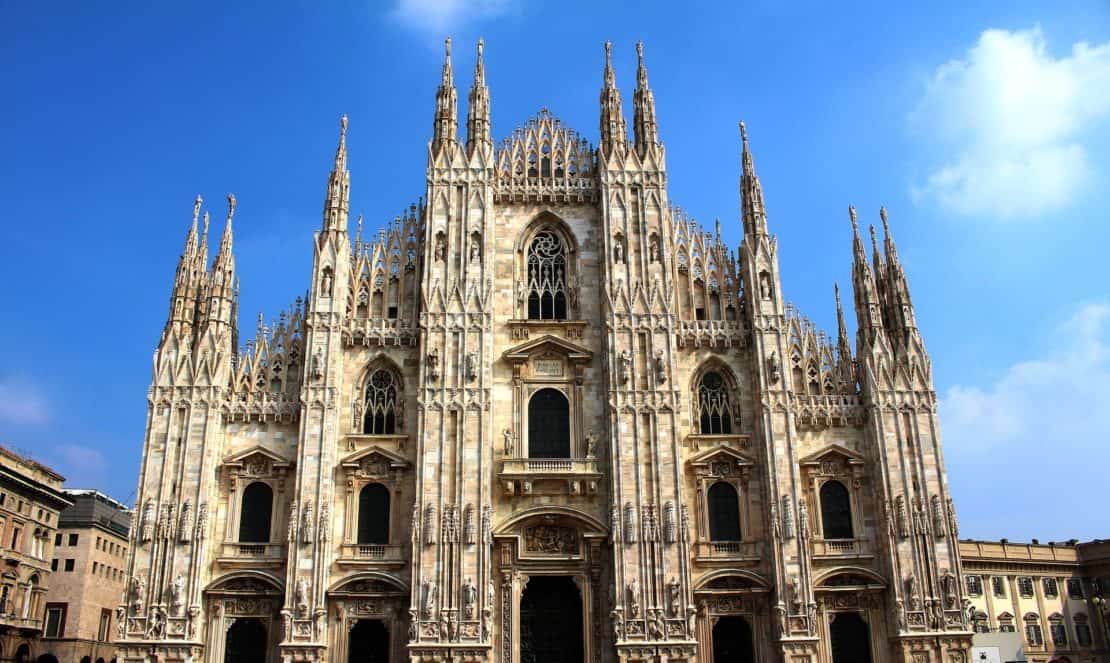
The Duomo di Milano
The sheer size and architectural panache of the Milan Cathedral strike wonder and awe in tourists visiting this world-renowned building in Milan. This enormous cathedral took an incredible six centuries to complete, starting in the 14th century with the finishing touches only arriving as late as 1965. It is located in Piazza di Milano in the heart of the city.
The Duomo is the largest church in Italy and the second largest in Europe, with the capacity to accommodate 40,000 people. It is dedicated to Santa Maria Nascente, also known as the Saint Mary of the Nativity. There are six main sections inside the cathedral with elaborately carved interiors and rooftops with ornate sculptures and spires.
Want to see more than just famous landmarks? Head from Milan into the mountains and stop off at Chiavenna.
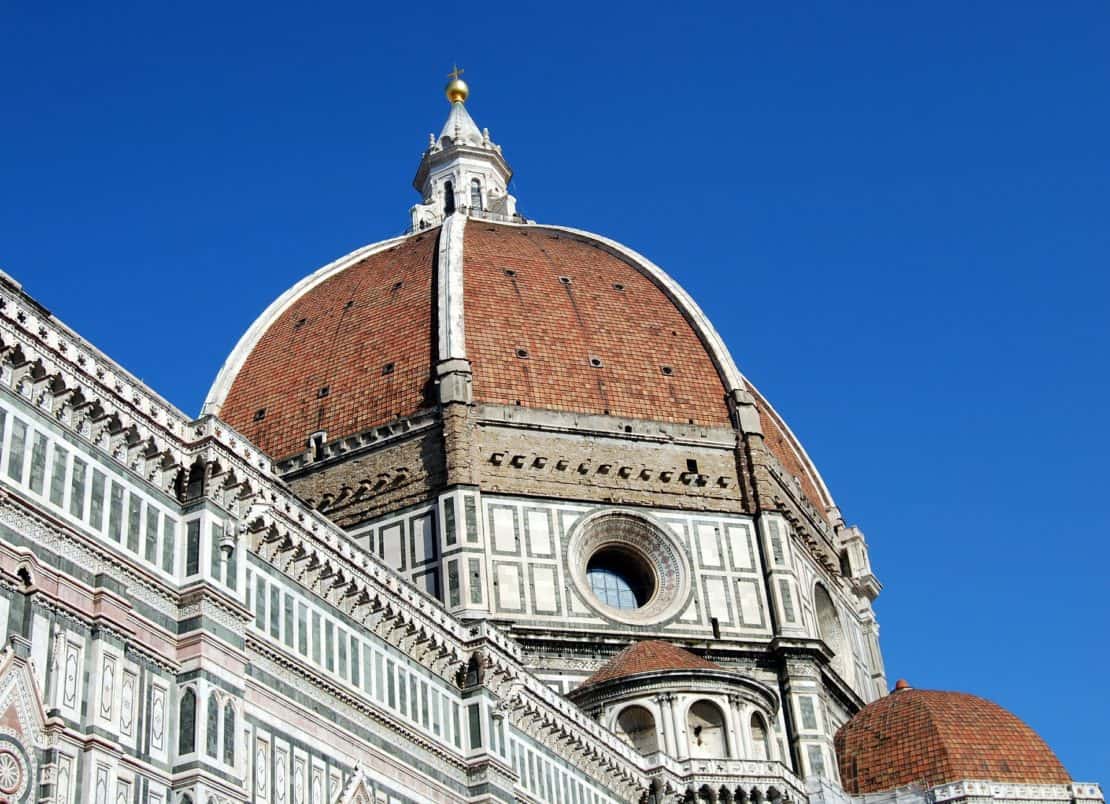
The Duomo Santa Maria del Fiore, Florence
Another famous cathedral is the Duomo Santa Maria del Fiore in Florence. This Renaissance church was designed by Arnolfo di Cambio in 1296 and was completed by Filippo Brunelleschi in 1434. It is most famous for the impressive dome that dominates the Florence skyline. Named after Saint Mary of the Flower, it is fondly referred to as the “Duomo” after the enormous octagonal dome.
The Duomo is made of two domes. Sandstone and marble are used for the inner one, while the outer dome is constructed from brick and mortar. This church is 90 meters wide and 152 meters long which makes it the third-largest church in Italy.
